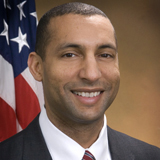By Brittney Dunkins
The U.S. Supreme Court offered a ruling in Shelby County v. Holder last week, deciding in a 5-4 majority that Section 4 of the Voting Rights Act (VRA) is unconstitutional.
The VRA was signed into law by President Lyndon B. Johnson in 1965 to counteract the proliferation of voting laws and practices, such as literacy tests and poll taxes that discriminated against minorities during the Jim Crow era.
Under Section 4, certain states, with a proven history of discrimination against minorities as measured by a formula set forth in the law, were required to obtain permission from the federal government before changing any voting practices or procedures.
According to the opinion offered by Chief Justice John Roberts, the “conditions that originally justified these measures no longer characterize voting in the covered jurisdictions.” The court recommended that a new formula be set to address current voting conditions.
The ruling came despite a reassessment of the law by Congress in 2006 that found Section 4 to be necessary considering recent instances of voter discrimination. Noted civil rights leader Rep. John Lewis, D-Ga., bemoaned the ruling in an opinion piece in the Washington Post.
George Washington Today spoke with Law School Professor Spencer A. Overton to discuss the specifics of the VRA decision and how it will affect voters.
Q: The Supreme Court decision in Shelby County v. Holder applies to Section 4 and subsequently Section 5 of the Voting Rights Act. Can you explain the decision, its basis and how it applies to the law?
A: The preclearance provision of the Voting Rights Act required that all or part of 15 states submit their election changes to federal officials for approval. Five members of the court ruled that the Section 4 coverage formula of the Voting Rights Act is unconstitutional and can no longer be used to require that areas pre-clear their election rules with federal officials. The court invalidated the coverage formula because the justices believed the formula was based on outdated election data from the 1960s and 1970s.
Q: Since only one section has been ruled unconstitutional, does this affect or void any other sections or the Voting Rights Act as a whole?
A: Invalidating the Section 4 coverage formula makes the Section 5 preclearance less effective, as few areas are now covered by the preclearance requirement.
Q: Can you explain how the law has been revised over the years, specifically the most recent 2006 revision, and how that relates to the ruling?
A: During the 2006 renewal process, Congress heard from more than 90 witnesses, had 21 hearings, and compiled a 15,000-page record to determine that the existing coverage formula should continue to be used. The court disagreed with the conclusion of Congress.
Q: Finally, what is your prediction for how the law will affect voters in the states previously affected by the law and across the nation?
A: Protecting voting rights now will be more expensive and slower. We will miss a lot of under-the-radar manipulation. It also will be tougher to stop unfair rules before they are actually used in elections and harm voters. The biggest problem will be the under-the-radar manipulation of election rules for local offices that are often non-partisan and escape national attention—more than 85 percent of all election rule changes rejected as unfair under Section 5 were at the local level.
Nueces County, Texas, provides one example. After the rapidly growing Latino community surpassed 56 percent of its population, the county gerrymandered local election districts to diminish the influence of Latino voters. The Voting Rights Act blocked Nueces County's gerrymandering in 2012, but now that the court has rolled back the act, state and local politicians will have more opportunities to manipulate voting rules.
Affirmative action case
Meanwhile last week, the civil rights community was somewhat bolstered by another decision from the court that remanded Fisher v. University of Texas back to a lower court to continue support for diversity in higher education through affirmative action with strict oversight.
The George Washington University submitted a friend of the court brief with nine other universities in support of the University of Texas. The university believes in the value of a diverse student body and hopes that courts continue to provide a clear path to achieving it. GW is currently reviewing the latest decision, and will do the same with any further court proceedings.


